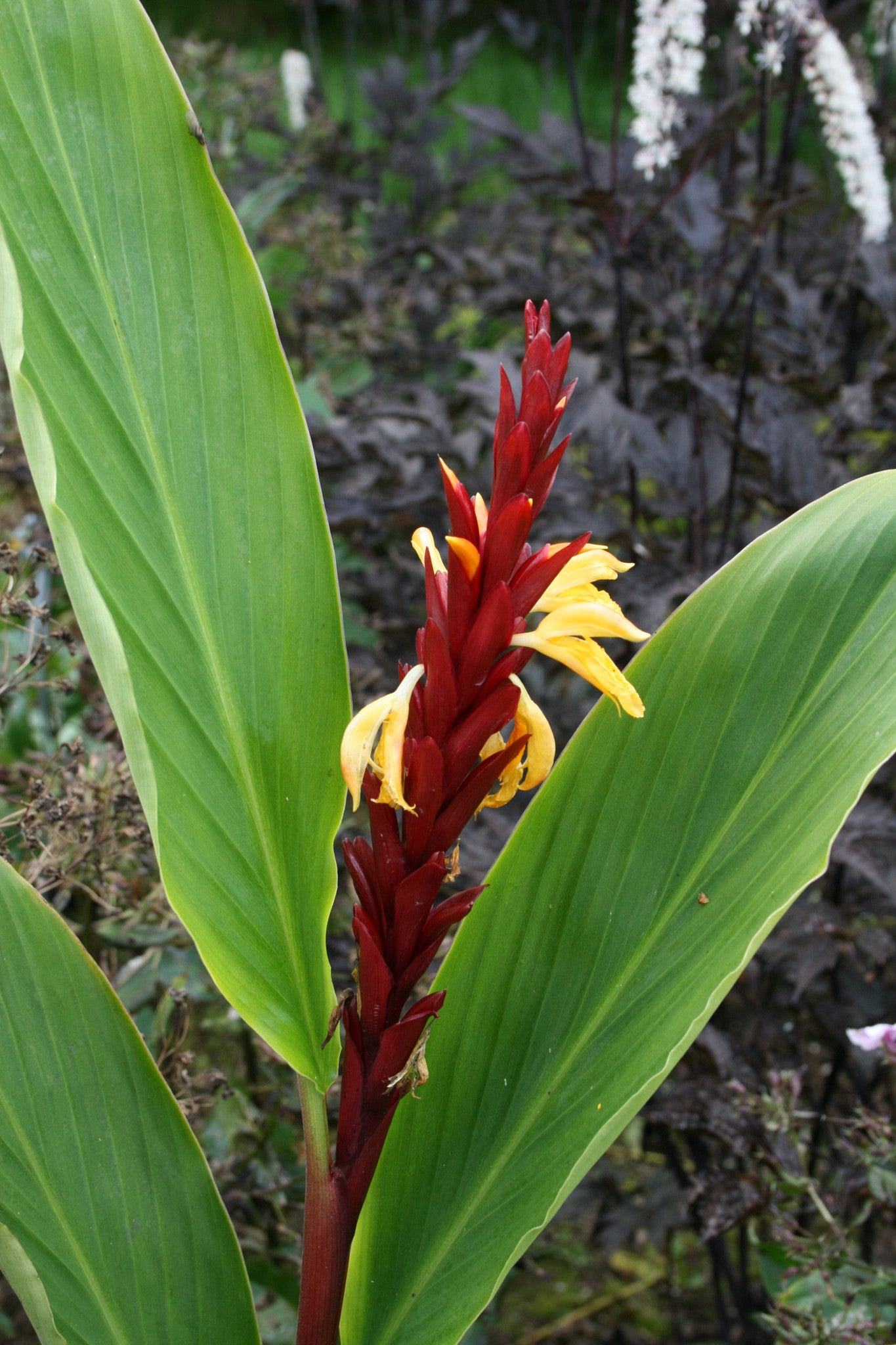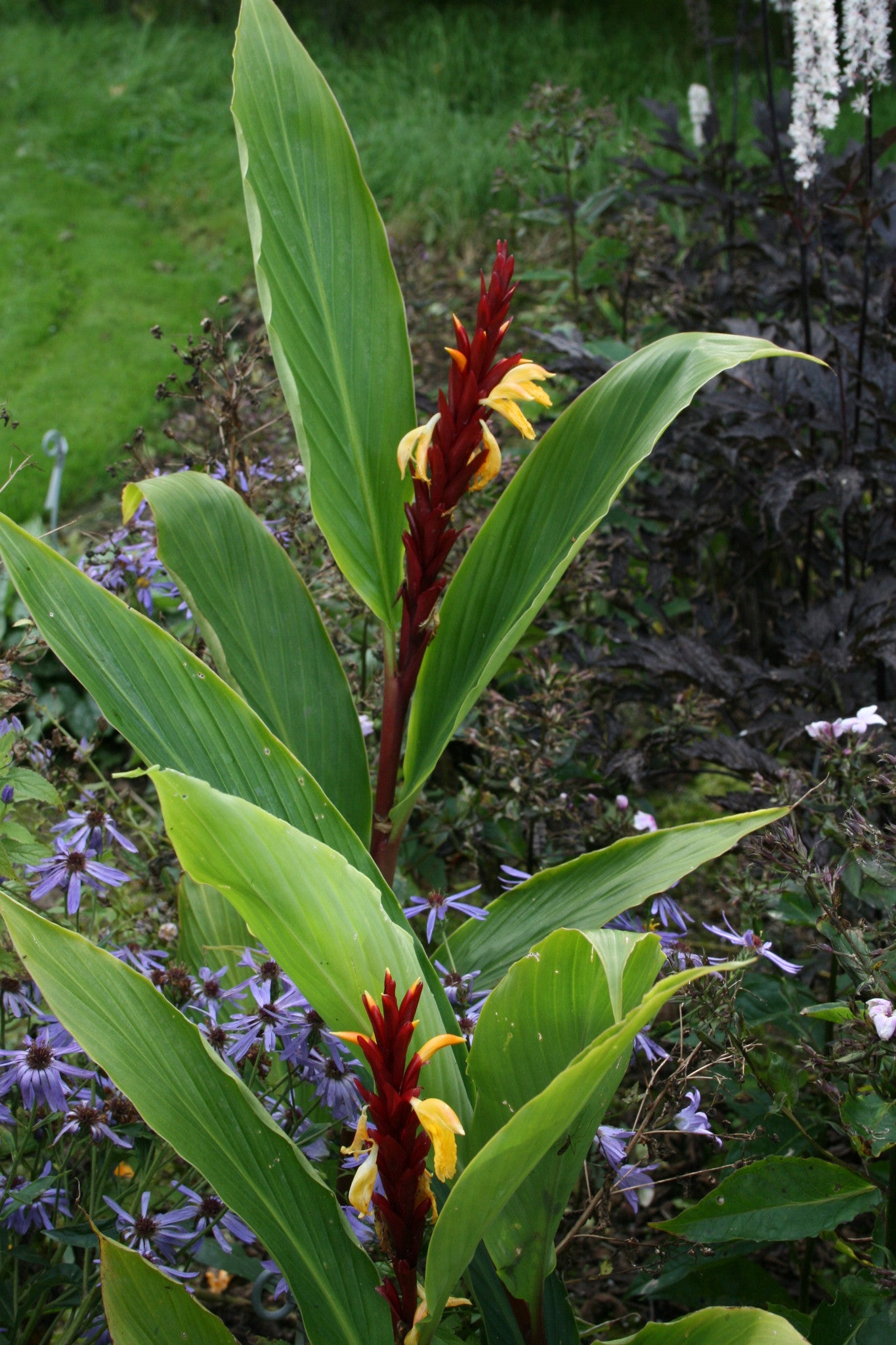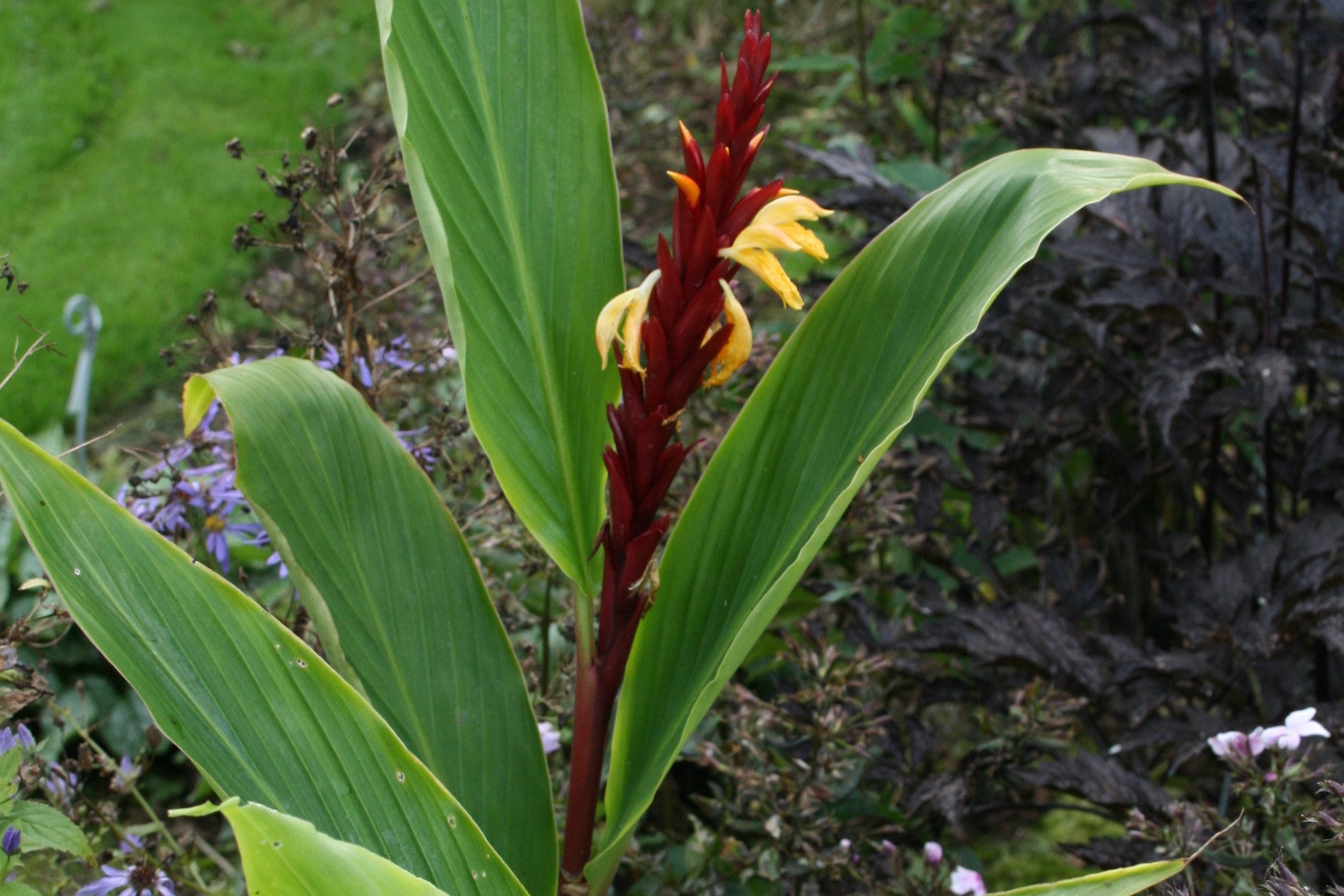Cautleya spicata
Approx. 0.5 litre pot
About this cultivar:
Cautleya spicata is a cultivar with strong, almost yard-high stems, wrapped with large lush leaves, terminating in fantastic foot-long spikes of rich amber flowers which are held in maroon calyces and bracts, tucked one behind the other. Tough as old boots it is probably the best ginger for our climate. The specific epithet, spicata, means "spiky".
- Position: Partial shade
- Soil: Almost any soil, grows well in Ballyrobert
- Flowers: June, July, August
- Other features: Grows well in Ballyrobert
- Hardiness: Fully hardy - grows well in Ballyrobert!
- Habit: Columnar or Upright
- Foliage: Deciduous
- Height: 60 cm - 90 cm (2 - 3 ft)
- Spread: 15 cm - 45 cm (0.5 - 1.5 ft)
- Time to full growth: 2 to 5 years
- Plant type: Herbaceous Perennial, Shrub
- Colour: Red, Yellow, green
-
Goes well with: Kirengeshoma or Anemone. Cotinus, dark Berberis or Actaea.
About this genus:
Cautleya is a small genus of perennial plants of the ginger family first described in 1882 by the botanist James Edward Smith. Found in eastern Himalayas through to China and Vietnam, it is native to cool forest areas – an unusual habitat for members of the ginger family.
Cautleya grow from short rhizomes which have thick, fleshy roots. They have "pseudostems" that die back in the winter with shoots appearing again in spring. The yellow or orange flowers appear in the summer and are grouped into a spike (inflorescence) that brings a wonderfully exotic, yet natural, look to the garden.
Due to their native habit they do well in the UK and Ireland and we find they are most at home under trees or between shrubs - but also look great in a mixed border as long as they don't dry out. Soil wise - nothing too wet or dry please.
Try planting with other Asian woodland natives like Kirengeshoma or Anemone. The exotic feel of Cautleya also pairs well with deep-dark foliage so you can also try Cotinus, dark Berberis or Actaea.






